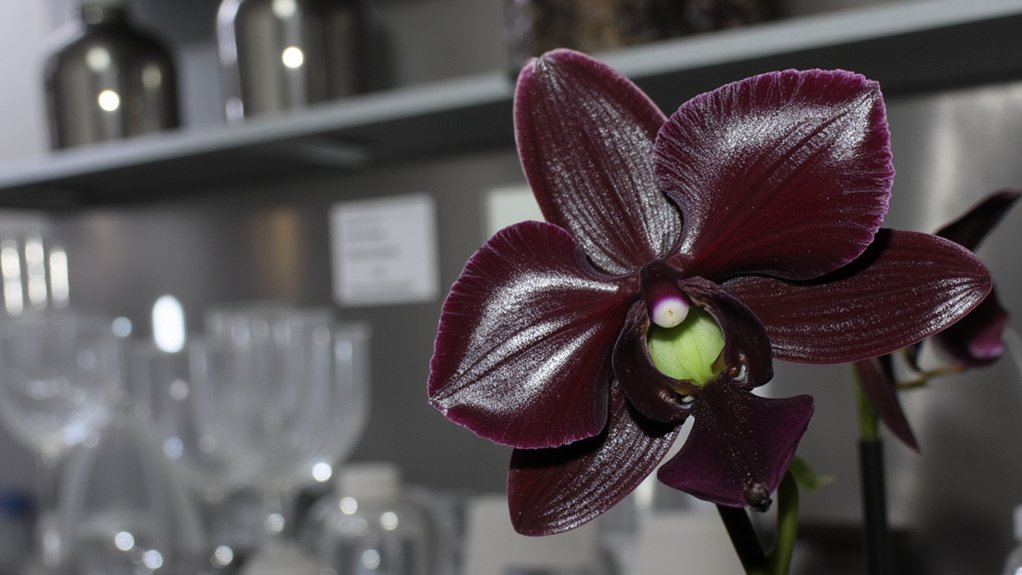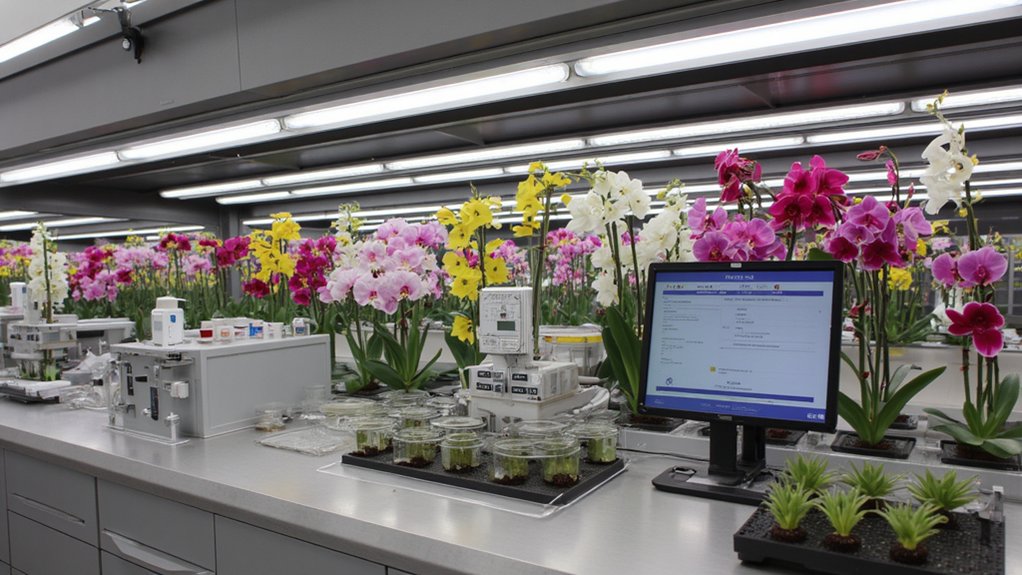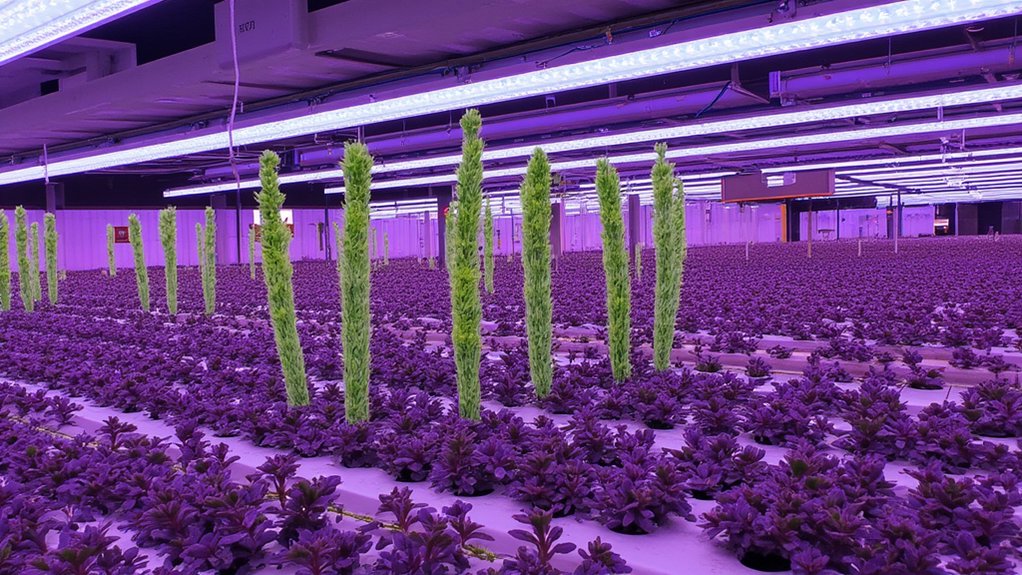You’re about to discover how plant genetics is transforming the future of rare and exotic species conservation. With CRISPR technology advancing rapidly since 2012, scientists can now map, modify, and protect endangered plants with unprecedented precision. From preserving ancient orchids to engineering climate-resistant varieties, these breakthroughs aren’t just saving species – they’re revealing valuable compounds that could revolutionize medicine and industry.
Contents
- 1 Unlocking the Genetic Secrets of Endangered Orchids
- 2 CRISPR Technology’s Role in Exotic Plant Conservation
- 3 Climate Resilience Through Advanced Plant Genetics
- 4 Preserving Ancient Species: From DNA Mapping to Protection
- 5 Discovering Novel Compounds in Rare Botanical Species
- 6 The Impact of Genomic Research on Global Biodiversity
- 7 Future Applications of Rare Plant Genetic Engineering
Unlocking the Genetic Secrets of Endangered Orchids

Deep within the world’s rarest orchids lies a genetic treasure trove waiting to be discovered. You’ll find that these endangered species contain unique DNA sequences that could revolutionize our understanding of plant adaptation and survival. Their genetic codes hold secrets about drought resistance, pest immunity, and remarkable reproductive strategies.
When you examine an orchid’s genome, you’re looking at roughly 25,000 to 35,000 individual genes. Scientists are now using CRISPR technology to identify specific traits that make these plants so resilient. By mapping these genetic markers, you can help preserve endangered varieties and potentially develop hardier hybrids for future generations.
CRISPR Technology’s Role in Exotic Plant Conservation

While traditional conservation methods have struggled to save exotic plants, CRISPR gene-editing technology now offers unprecedented possibilities for species preservation. You’ll find scientists using CRISPR to modify specific DNA sequences within 24-48 hours, compared to years of conventional breeding.
When you’re looking at threatened species like the Ghost Orchid, CRISPR can enhance disease resistance and climate adaptability. The process involves identifying vulnerable genetic sequences and precisely editing them using Cas9 proteins, which act like molecular scissors.
You can now witness these modified plants showing up to 80% better survival rates in their native habitats, while maintaining their original genetic integrity.
Climate Resilience Through Advanced Plant Genetics

As climate patterns become increasingly unpredictable, you’ll find advanced plant genetics emerging as an imperative tool for developing resilient crops and ecosystems. Scientists are now mapping specific genes that help plants withstand extreme temperatures, drought, and soil salinity.
You’ll see these genetic adaptations at work in new hybrid varieties that can survive with 40% less water or tolerate temperature swings of 30°F. Through selective breeding and genetic modification, researchers have already created wheat varieties that maintain yields in temperatures 15°F above normal.
Modern gene sequencing lets you identify and preserve vital survival traits from wild relatives, which we’ll need as climate zones shift northward by up to 400 miles within decades.
Preserving Ancient Species: From DNA Mapping to Protection
The preservation of ancient plant species builds directly on modern climate resilience efforts, taking genetic research in a fascinating historical direction. You’ll find scientists mapping DNA from preserved specimens, some dating back 10,000 years, to reveal genetic secrets of extinct plants.
When you’re examining ancient plant preservation, two key approaches emerge: digital DNA libraries and seed banking. Today’s researchers use advanced sequencing to create detailed genetic maps, storing data in temperature-controlled vaults at -20°C, while banking viable seeds at -18°C in facilities like Norway’s Svalbard Global Seed Vault.
These preservation methods guarantee you’re protecting both information and living material for future generations.
Discovering Novel Compounds in Rare Botanical Species
Modern research into rare botanical species continues to uncover remarkable compounds with potential medical and industrial applications. You’ll find scientists using advanced screening techniques, like high-throughput bioassays and metabolomics, to identify unique molecules in endangered plants.
When you examine rare species, you’re likely to discover compounds that haven’t evolved in common plants. For instance, the Madagascar periwinkle contains vincristine, a powerful anti-cancer agent you won’t find elsewhere in nature.
Today’s researchers combine traditional knowledge with cutting-edge technology, analyzing everything from leaf extracts to root systems. They’re racing against extinction to catalog these compounds before species disappear forever.
The Impact of Genomic Research on Global Biodiversity
Genomic research extends far beyond discovering individual compounds, offering unprecedented insights into Earth’s biodiversity. You’ll find that modern sequencing techniques can map entire plant populations, tracking their evolution and adaptation across different regions and climates.
When you examine the data from genomic studies, you’re able to identify threatened species’ genetic bottlenecks and develop targeted conservation strategies. These techniques help you preserve rare plant varieties and their valuable genetic traits.
Future Applications of Rare Plant Genetic Engineering
While traditional breeding methods have their limits, rare plant genetic engineering opens up remarkable possibilities for preserving endangered species. You’ll find scientists can now isolate specific genes responsible for drought tolerance, disease resistance, and adaptive traits.
By 2025, you’ll likely see widespread application of CRISPR technology in rare plant conservation, allowing precise DNA modifications within 24-48 hours. This means you can strengthen vulnerable species against climate change and pathogens.
The process typically starts with tissue sampling, followed by gene sequencing and targeted modifications. You’ll need specialized lab conditions at 23°C, maintaining 85% humidity for ideal results during genetic alterations.
